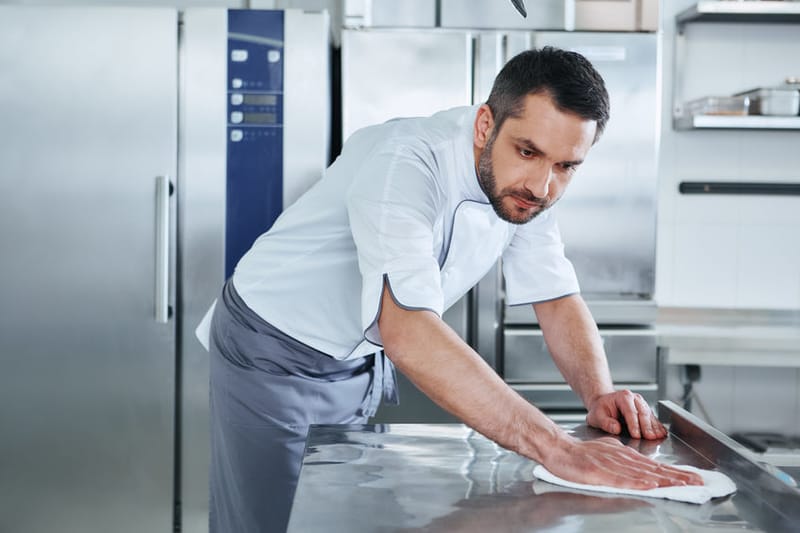With the current health crisis and the efforts to prevent the spread of COVID-19, certified food protection managers have been required to up the ante on their attention to sanitation procedures in the kitchen and on the dining room floor. While proper sanitation will help prevent the spread of the Coronavirus and keep other contaminants out of the food your serve your guests, frequent sanitation can lead to the risk of chemicals making their way into the food you serve. Since Certified Food Protection Managers are sanitizing more frequently in these times, we should take a look at measures to keep our food free of chemical sanitizers.

Use of Sanitizers in Food Preparation by Certified Food Protection Managers
Sanitizing on a regular basis should not pose any threat to your guests. In fact, proper sanitation procedures should be done as frequently as necessary in order to kill viruses and bacteria in your establishment. The danger in over sanitation doesn’t come from sanitizing too often, it comes from using too much sanitizer product.
There are three types of sanitizer options approved by the Minnesota Food Code for use by Certified Food Managers in restaurants and other food production establishments:
- Bleach or chlorine solution at 50ppm for 10 seconds
- Iodine solution at 12.4 to 24ppm for 30 seconds
- Quaternary ammonia solution at 200 to 400ppm for 30 seconds
Sanitizer solutions at the appropriate dilutions should be enough to keep the Coronavirus at bay. The danger lies is exceeding the amount of sanitizing chemicals in these recommended solutions. At the appropriate levels, bleach, iodine and ammonia will evaporate at room temperature after they have been utilized. If the concentrations are much higher than the recommended dilutions, you run the risk of exposing food that is served or prepared on previously sanitized surfaces. You may have reduced the risk of spreading viruses and bacteria, but you’ve increased the risk of adding unwanted chemicals to your product.
Besides sanitizing our surfaces, we’re also tempted to use sanitizer on our hands more often than before. While the health department allows for the use of antiseptics after hand washing, we must be very careful to remember that bare-hand contact with ready-to-eat foods is not allowed. Certified food protection managers should take an extra precaution and remind their staff to always wear food-service gloves when handling food and to change them after every task. This will prevent sanitizers on our hands from coming into contact with food product.
Are certified food protection managers in your establishment monitoring your sanitizing procedure to prevent chemical sanitizers from contaminating the food you serve?


